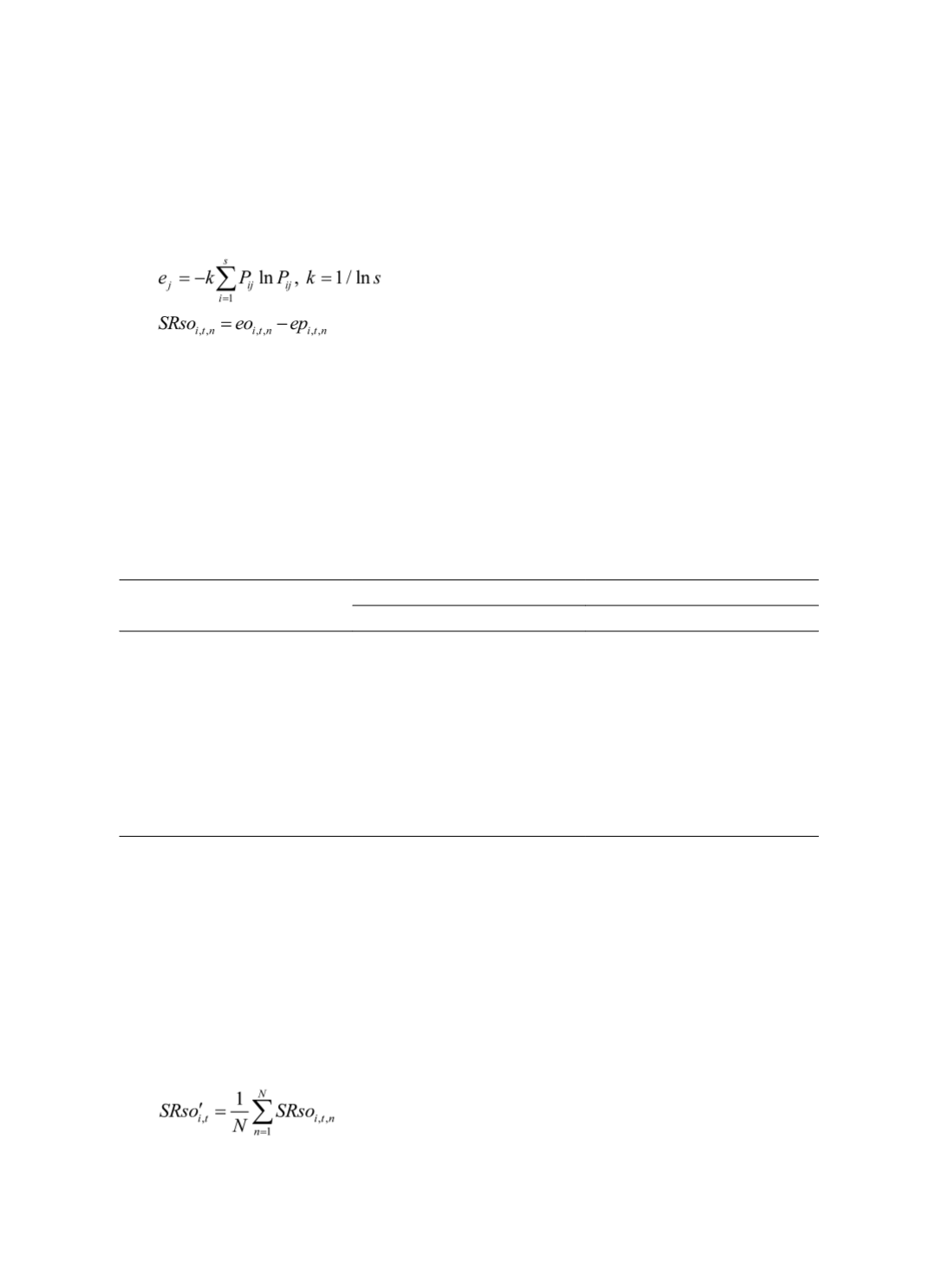

103
臺大管理論叢
第
28
卷第
1
期
in the news item and the sentiment ratio are then calculated using entropy, as expressed in
Equations (8) and (9), with the results being reported in Table 5.
(8)
(9)
where
e
j
is the entropy of the
j
th
sentiment state;
P
ij
is the weight of the
i
th
paragraph in
the
j
th
sentiment state; and
s
refers to the number of paragraphs in the news item.
SRso
i,t,n
is
the sentiment ratio of the
i
th
firm for the
n
th
news on day
t
;
eo
i,t,n
is the optimism entropy of
the
i
th
firm for the
n
th
news on day
t
; and
ep
i,t,n
is the pessimism entropy of the
i
th
firm for
the
n
th
news on day
t
.
Table 5 Degree of Optimism and Pessimism in Media Reports Using Entropy
Paragraph
State
Optimism
Pessimism
1
–0.3290
0.0000
2
–0.2554
–0.1125
3
0.0000
0.0000
4
0.0000
0.0000
5
–0.3658
0.0000
Totals
–0.9502
–0.1125
–k
–0.6213
–0.6213
e
j
0.5904
0.0699
Note:
e
j
is the entropy of different states, including ‘optimism’ and ‘pessimism’ and
k
is equal to 1/
ln(
s
), where s is the number of paragraphs in the news.
By referring to the process from Tables 3 to 5 and Equations (8) and (9), the example
shows that optimism entropy is equal to 0.5904 and the pessimism entropy is equal to
0.0699. The sentiment ratio calculated by the semantic orientation method is equal to
0.5205; using Equations (10) and (11), the ratio is standardized for all stocks in the market
in order to exclude the impact of the market sentiment cycle:
(10)


















